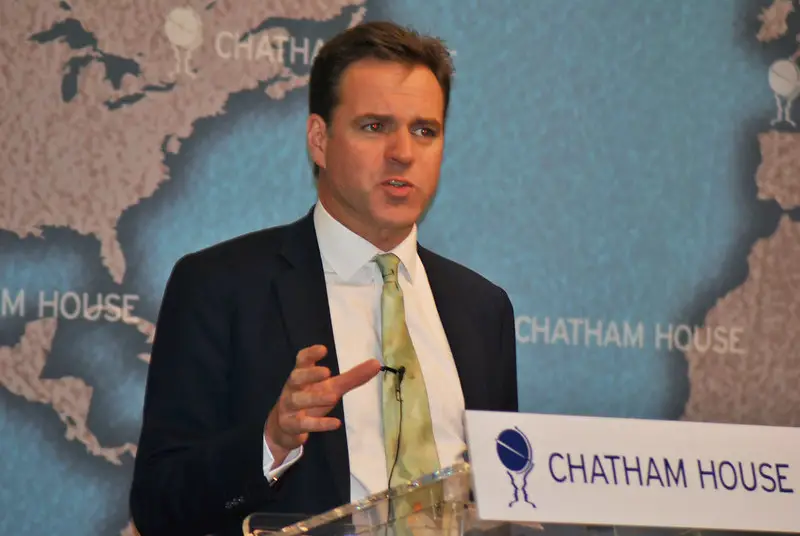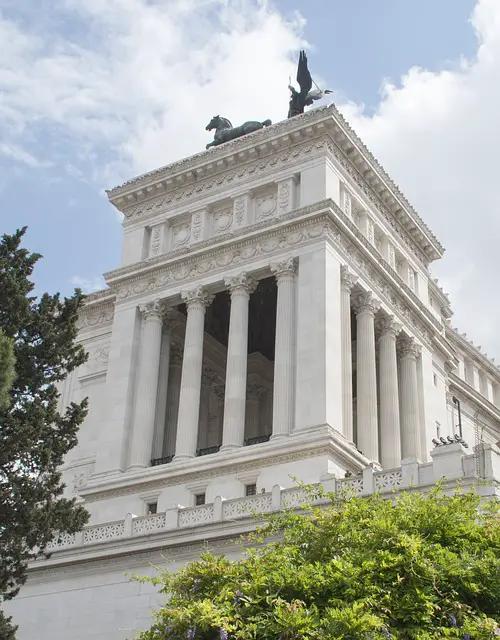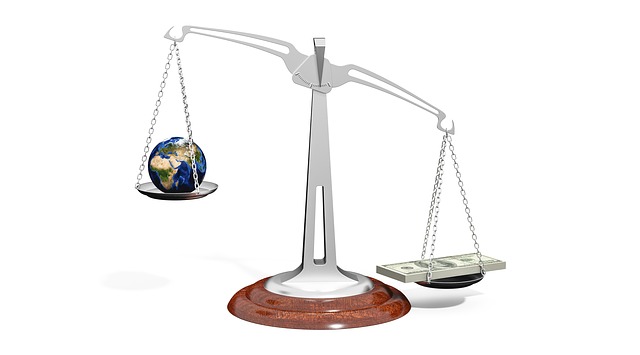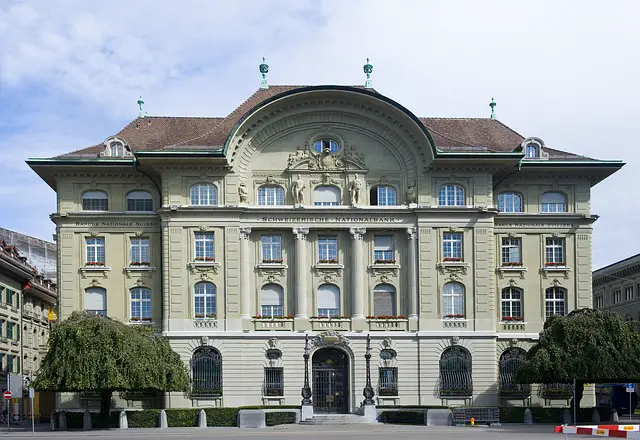Life is evolving constantly every other day and it is possible through a process called natural selection, according to a discovery by Charles Darwin. The most suitable ways of life for their habitats thrived, while those less successful died out.
There is only enough energy left in most environments to sustain a small period of life. Fighting over such tools is dangerous when defeat always leads to extinction.
The more successful life forms were able to disperse their genes by reproduction and therefore grow in number, gradually taking the place of the dwindling ones.
The transition is ongoing; species still die out and are being replaced by new species. These shifts are typically limited to specific areas, but events occasionally happen that cause large-scale extinctions.
For instance, a meteor killed off nearly all life on earth 64 million years ago along with most dinosaurs. In cases like this, new species will emerge in the gaps left by the extinct ones, such as after the meteor catastrophe, mammals took the place of dinosaurs.
The financial system evolves likewise, by the discovery of markets. And it can be called as the financial equivalent to natural selection. The financial world is continually changing in the same way as the natural environment is continuously evolving, through modern strategies and inventions. The businesses that respond to these modern conditions are rising and thriving, and are being imitated by others, while the others simply cease to exist. It is the financial equivalent of the replication of chromosomes.
Moreover, businesses that cling to obsolete methods and struggle to generate enough returns are destined to extinction.
Any occurrences, such as the 1929 and 2008 financial crises, led to a mass extinction of financial institutions and activities. In such cases, space is generated for springing up new forms of financial companies and financial activities.

Chapter 1 – Money’s importance derives from the confidence we put in it as societies, not from its intrinsic value.
In the sixteenth century, when the Spanish colonizers marched into Central and South America, they were primarily driven by the search for gold and silver. The more valuable metal they could find and buy, the more coins they could produce, and therefore the more wealth they would eventually get. What happened, however, was that the increased coinage supply ultimately contributed to its worth to decline, independent of what precious metal it was made of.
The colonizers have refused to understand that money’s strength and worth does not derive from its intrinsic value but from what people are able to give you for it. Money overabundance often contributes to inflation.
As long as the public believes in its worth, it does not make any difference what it is made from.
Trust is a key factor in money’s worth. We believe that the currency we use will maintain its worth and that our central banks will not overproduce it, unlike the Spaniards. We trust banks to keep our money secure and we trust them to pay back our loans. Without that kind of trust, money is not worth the paper on which it is written.
Since paper and base metal coins have almost no inherent value, the tangible currency itself is useless nowadays. The overwhelming majority of the world’s wealth does not even exist directly; it is completely intangible and can be distributed remotely around the world without ever materializing.

These useless tokens are recognized as value holders, and we trust them collectively.
Money’s importance derives from the confidence we put in it as communities, not from its intrinsic worth.
Chapter 2 – The credit and debit model supports the financial system through money creation.
One of the most influential advancements in modern history was the introduction of credit and debit concepts. It serves as a guiding force of human progress, alongside technological and scientific advances.
In ancient Mesopotamia, the oldest ways of borrowing and loaning can be found. Similar to IOU (“I owe you”) papers, lenders were given clay tablets engraved with how much they were owing to the other person.
Guided by innovations in banking practice, this basic borrowing, and lending mechanism gradually developed into the credit system as we now recognize it.
Banks are the principal producers of liquidity, which in essence finances the financial system through capital growth.
The capital extension means that credit does ultimately produce wealth. Say you are depositing 100 euros into the bank. They are likely to keep some of the money in savings and lend, perhaps, 90 euros to someone else. The person may put this loaned money into another bank, and then continue the process of the first bank, holding it a little and loaning out the remainder, e.g. 80 euros.

Therefore, from the initial 100 euros, the system produced 270 euros, and the money supply was effectively expanded.
Monetary growth has been critical in sustaining the financial sector, as the capital generated can be used to finance projects or to purchase commodities. If not for this simple debtor-creditor arrangement, the banking system would fail and the liquidity flow would become static.
The credit and debit system finances the financial system through money formation.
Chapter 3 – The financial system is a result of the centuries-long growth of interconnected capital markets and institutions.
The new financial system was built primarily in Western Europe and North America.
In medieval Italy, intensified trade with the Arab world carried financial benefits and improved accounting structures. This led to the formation of the first banks since merchants wanted credit access to finance their business.
Banks are vital to the financial system since they finance the economy by providing credit.
War has been the spark for the next financial advancement: bond innovation, and the bond industry.
This first creation occurred in medieval Italy, once again. Italian city-states were in perpetual conflict with each other and they were in desperate need of funds to pay for their troops and weapons. They collected those funds by issuing bonds: loans to the government that charged a fixed interest rate. On the bond market, such government IOUs may be exchanged.
The next phase of the financial system first appeared in Holland in the seventeenth century: the joint-stock corporation. Companies financed themselves by the disposal of equity rights which could be exchanged on the stock market. This specific invention proved to be very successful and it was very easy to spread all around the world.

Insurance firms used a financial-market study in the eighteenth century to build large insurance portfolios that helped mitigate risk. In the twentieth century, governments have considerably extended their role in the area.
Ultimately, the real estate industry was greatly enlarged by globalization and government subsidies starting in the 1920s. This was implemented for political ends, to try to establish a prosperous and self-reliant, property-owning society.
The relations between these capital markets and the institutions form the global financial system together.
The financial system is a result of the centuries-long growth of interconnected capital markets and institutions.
Chapter 4 – Finance, especially access to credit, is the most successful way to get a path out of deprivation.
Tales of ‘greedy bankers’ are always repeated to us: financial predators that prey on the weak and unlucky ones. They reportedly manipulate other people’s shortcomings and lack of financial expertise to steal money from the bottom rung of society and accumulate that money at the top of society.
But the financial system is essentially the only way for countries, societies, and individuals to avoid hardship and survive on a strong financial base.
For instance, banks encourage savers to deposit funds which can then be lent to those who need it. If the funds are not deposited into the bank it would remain idle until it was invested by its holders. The money is made accessible to everyone by storing it in the treasury. It can be converted into a more dynamic form (credit) from its stagnant state, and thus moved from the “idle to the industrious” state.
Underprivileged people tend to lend from less credible lenders, such as loan sharks, when they have no access to affordable credit themselves. Pawnbrokers also take advantage of people who are desperate for cash but unwilling to borrow from reputable financial companies. Extraordinarily high-interest rates are paid, and late-payment fines may also take the form of abuse.

Credit access helps individuals to make long-term investments and choices like owning houses, beginning a company, or investing in a company.
Take microfinance in deprived communities, as an instance. Relative small sums are lent by microfinance, typically to vulnerable people with little to no collateral. These loans can finance the purchasing of costly products such as livestock or can help the borrowers launch their own micro-enterprises. Only a tiny amount of inexpensive credit will make a huge difference in impoverished zones.
Finance, especially access to credit, is the most successful way to get a path out of deprivation.
Chapter 5 – Societies with a stable financial structure will thrive at the cost of financially dysfunctional societies.
Capital can not circulate openly in ineffective financial systems such as the communist command economy, or medieval feudalism. Bureaucrats regulate financial capital inefficiently to achieve political goals, or they accumulate money to maintain the hierarchy of society. The condition is stagnant, with little to no financial support.
Compared with other existing structures, the financial structure that was established in Western Europe makes the freest and most effective movement of money of them all. Competition is intense; financial firms need to be efficient and dependable, or stronger players will brush them aside.
Societies following the Western financial system have progressed in prospering and expanding at the expense of more underdeveloped economies.
As the more productive nations expanded their global scope in search of more wealth and sources of benefit, they became more and more in touch with nations that could not adequately handle their own wealth. This largely manifested itself as the emergence of European Empires, whose influence lay mainly in their financial resources. And since the rivalry was so intense, these regimes inevitably crumbled, replacing them with economically stronger institutions. The expansion of the Western financial system persisted by globalization in the twentieth century.

Quite a few historical cases can demonstrate the development:
Between the eighteenth and twentieth centuries, Western nations with highly integrated financial structures were able to conquer Asian countries which had an unstable, absolutist financial system, albeit rich in resources.
The Netherlands, home of the stock exchange and a major pioneer of modern banking, was able to liberate itself from the much larger Spanish Habsburg Empire in seventeenth-century Europe. Although the Empire was more plentiful in gold and silver reserves, it had very little economic knowledge which helped the Netherlands to surpass its competitor repeatedly economically.
Societies with a stable financial structure will thrive at the cost of financially dysfunctional societies.
Chapter 6 – The financial system represents human nature and is thus fundamentally unreasonable and unjust.
No financial system is ever flawless. This is because the individuals who run it and believe in it are human beings and because, by default, human beings are unreasonable and flawed.
Human beings are likely to switch between multiple moods frequently, from hope and happiness to pessimism and desperation. When it comes to money, it tends to magnify those mood swings, making us ever more irrational.
Human beings are more relaxed in a group by their nature. We like to see what other people do before making our own choices, witnessing their achievements and shortcomings helps us decide.
Human societies are also likely to be unjust. We can have distinct attributes and weaknesses and they are measured on their presumed value by others. Not all are treated equally by society.
Many unfair weaknesses and discrepancies are replicated and sometimes exacerbated in the financial system.
First of all, cash benefits are not fairly divided. Those who have the right mindset and expertise in the finance world will earn much more money and influence while others will not reap the same benefits. Inequality lies at the center of the financial system, just as it lies at the root of human existence.

Just like when humans undergo mood swings, so can the stock markets fall very easily from highs to lows. Trust among investors is extremely fragile. When their money is concerned, people are quickly frightened and may appear to react strongly to something that concerns their financial condition.
People will also see, and then replicate, what other investors are doing in such cases. This is likely to make capital markets chaotic, so investors are running in and out of investment en masse.
The financial system represents human nature and is thus fundamentally unreasonable and unjust.
Chapter 7 – Bubbles tend to grow on the stock market and ultimately burst right out.
The stock exchange is like a balloon. If confidence is high, stock and bond prices will grow and the economy will swell. Investors make their money off the market when trust is lower and it deflates.
The economy often inflates at such a high pace that the rates become unsustainable. The demand explodes the economy like an overfilled bubble, dragging down prices sharply. That is known as a bubble on the stock market.
A pretty popular financial phenomenon is the stock market bubble. They also typically follow the same trend. Yet investors are always shocked by them since they struggle to understand excessive business expansion. When the bubble collapses many lose large sums of income.
There are many explanations of why bubbles form and why they are not noticed by the public.
A Wall Street CEO’s typical finance career lasts 25 years – not long enough for most to understand the market’s up-and-down dynamics. Many believe the good days will last indefinitely and struggle to realize the downside to fast growth.

Often dishonest executives will deceive naïve customers by wrongly telling them of the performance and viability of the business, thereby pumping up share values excessively and reaping huge incentives. The share price crashes as such fraud is finally unmasked, leaving the stockholders to cover the costs.
The final cause for bubbles is that people do not completely grasp the financial system; they are fascinated by high-profit margins and incredible growth stories.
These ingredients combine to create demand growth which is unsustainable. When more and more consumers are sucked in, the economy is rising and increasing, until the bubble abruptly explodes, leaving investors with catastrophic losses.
Bubbles tend to grow on the stock market and ultimately burst right out.
Chapter 8 – Political mismanagement of current can typically trigger inflation and hyperinflation.
Inflation means the worth of currency has decreased. In any economy, a small amount of inflation is required as more money is still being produced, but extreme inflation, or hyperinflation, can be very risky for economies.
For those keeping government bonds and deposits in a particular currency, it is especially risky because these sources of capital are becoming less and less valuable.
Hyperinflation also stems from the systemic mismanagement of a nation’s monetary and currency structure. However, that will only happen if a country prints large sums of money and struggles to keep its national deficit under control.
The Central Bank or Government is responsible for this phenomenon; thus its underlying causes are political.

Quite typically the factors behind currency deflation and hyperinflation are intentional. They can be a successful means for a government to clean out its domestic debts because they reduce the worth of those debts substantially.
Other times, hyperinflation is the product of poor government decisions resulting from political turmoil or inability to address core economic challenges in the long run.
Whatever the causes for hyperinflation, it will all have far-reaching, detrimental implications on the entire community. It damages the capital of domestic borrowers and savers and hurts those on fixed incomes too. It also significantly reduces the currency’s reputation, as foreign borrowers may start demanding higher interest rates to cover an inefficient borrower’s lending. That would also affect borrowers at home.
Hyperinflation reveals the control that governments eventually have over the capital system, but it also reveals the risks of attempting to tackle the economy.
Political mismanagement of current can typically trigger inflation and hyperinflation.
Chapter 9 – Both private and welfare state insurance systems are inadequate at mitigating financial liability and instability.
In the 18th century Scotland, two hard-drinking Protestant ministers developed modern private insurance, who wished to give financial assistance to the families of dead vicars. They used social and statistical analysis developments to establish the first insurance policy in which a member’s premiums were collected and invested in returns. Then these returns should be sent to the participants in need.
This new private insurance system gave financial aid to the poor and partly mitigated the financial risk factor of existence. It became very successful, and insurance systems expanded rapidly in the 19th century.
Yet insurance coverage remained far from universal. People were either too poor, too stubborn, or too lazy to pay out the insurance. The lack of financial stability contributes to severe hardship for them or drives them into the workhouse, a prison-like facility for people who can not sustain themselves.
Politicians discovered early on that they could foster social security and win over voters by providing benefits for these people.

The welfare system seeks to reduce financial risk by policies such as affordable health insurance, pensions for the elderly, and education without a cost. However, there is a drawback: High wages and compulsory benefits have been claimed to eliminate incentives to work hard to save money. Most welfare states face rising health-care and pension costs as a result of an aging population.
There’s been a reaction against the welfare state in the past few decades. Multiple policymakers have moved to abolish aspects of the healthcare system and enable individuals and reacquire financial risks.
To protect themselves against danger, people must choose between pricey, unpredictable private insurance and the expectation that the diminishing welfare state will take care of them.
Both private and welfare state insurance systems are inadequate at mitigating financial liability and instability.
Chapter 10 – The real estate market reform reveals how government decisions can have drastic financial implications.
Democratic goals and financial realities have profoundly collided throughout history. Perhaps this is best shown by the trends in the twentieth-century real estate industry.
Governments, particularly those in the English-speaking ones, have adopted strategies to raise homeowners’ share. The explanation for this rests in the assumption that owners of properties are more self-reliant and stable than others who rent their houses.
And while this concept of a property-owned society was strategically beneficial, its financial consequences were unbalanced in the long run.
Take, for example, the financial crisis of 2008, the worst since the 1929 Wall Street Crash. It has contributed to bank defaults, state bailouts, and a worldwide financial crisis, and the origin lies in the US housing sector deregulation.
In 2003, the George W. Bush administration was encouraging subprime loans in an effort to boost homeownership in the USA. A subprime loan is a loan to someone who was previously considered to be too dangerous to lend to.
Politically, the loans have been a positive move towards increasing land ownership, particularly among ethnic minority groups.

Yet subprime lending was impossible financially; it was only possible by a form of financial magic. Those who gave out the initial loans understood how likely the creditors were to default, so they were repackaging and reselling the loans internationally to others who did not realize their dangerous essence.
The delusion lasted only for a short while; the house prices plunged as soon as the borrowers started to default on their lending. Institutions such as pension funds and even some town governments in Norway have been left with useless debt nationwide, and the problem has spread further across the financial system.
The world financial system crashed when the mortgage bubble was being exploited for political advantage.
The real estate sector reform reveals how government decisions can have drastic financial implications.
The Ascent of Money: A Financial History of the World by Niall Ferguson Book Review
Established through the years, the current financial system is unfair, unjust, chaotic, and hard to regulate. However, it does have the most effective approach for resource formation and distribution. This redistribution of capital to the areas it desperately needs is critical for sustainable economic growth and human progression.
What is the financial system, and how was it built?
- In terms of structure, the financial system is developmental.
- Money’s importance derives from the confidence we put in it as societies, not from its intrinsic value.
- The credit and debit model supports the financial system through money creation.
- The financial system is a result of the centuries-long growth of interconnected capital markets and institutions.
How is the financial system the engine of human progress?
- Finance, especially access to credit, is the most successful way to get a path out of deprivation.
- Societies with a stable financial structure will thrive at the cost of financially dysfunctional societies.
What are the system’s flaws?
- The financial system represents human nature and is thus fundamentally unreasonable and unjust.
- Bubbles tend to grow on the stock market and ultimately burst right out.
What is the connection between the financial system and politics?
- Political mismanagement of current can typically trigger inflation and hyperinflation.
- Both private and welfare state insurance systems are inadequate at mitigating financial liability and instability.
- The real estate market reform reveals how government decisions can have drastic financial implications.
